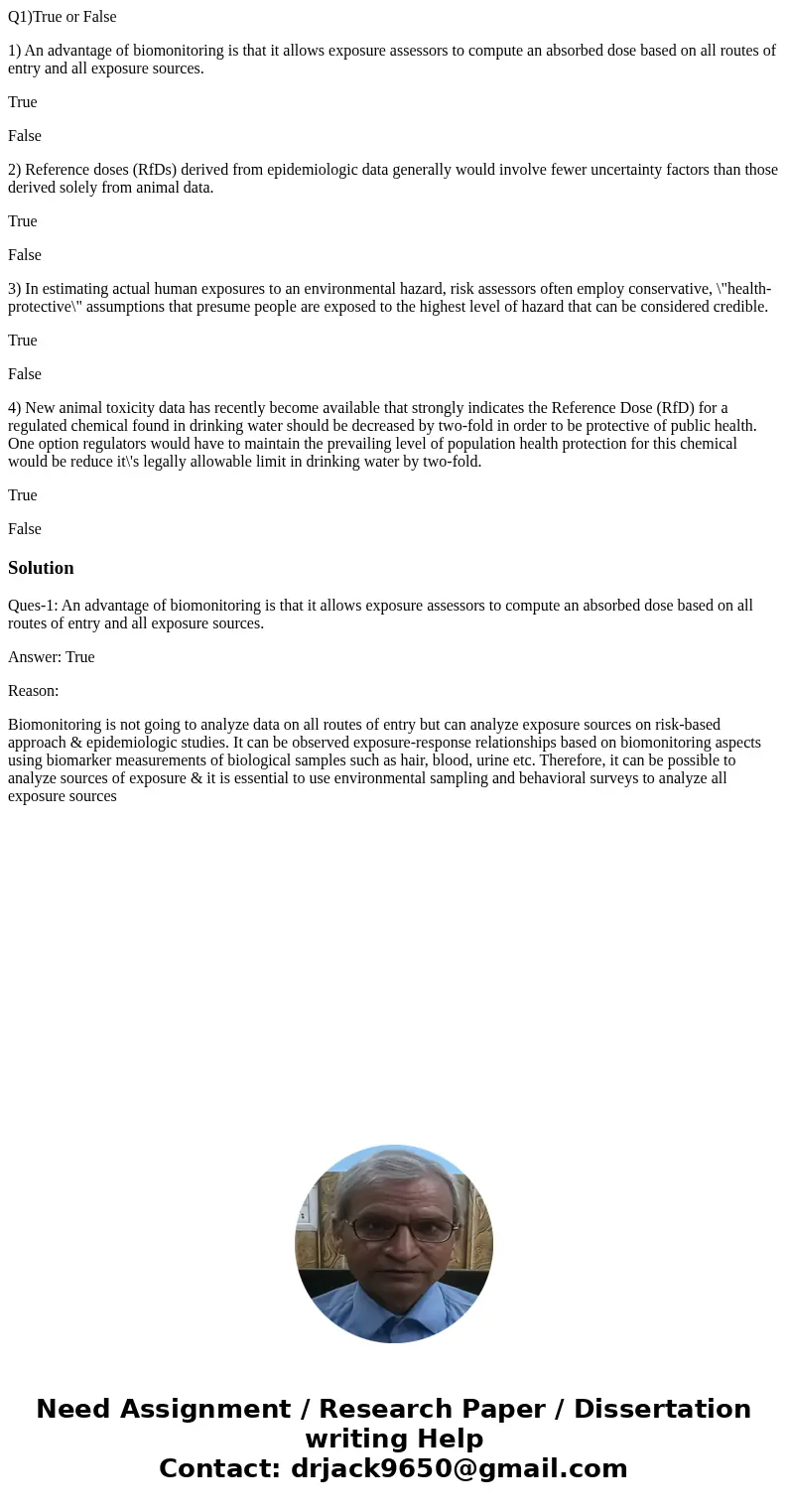Q1True or False 1 An advantage of biomonitoring is that it a
Q1)True or False
1) An advantage of biomonitoring is that it allows exposure assessors to compute an absorbed dose based on all routes of entry and all exposure sources.
True
False
2) Reference doses (RfDs) derived from epidemiologic data generally would involve fewer uncertainty factors than those derived solely from animal data.
True
False
3) In estimating actual human exposures to an environmental hazard, risk assessors often employ conservative, \"health-protective\" assumptions that presume people are exposed to the highest level of hazard that can be considered credible.
True
False
4) New animal toxicity data has recently become available that strongly indicates the Reference Dose (RfD) for a regulated chemical found in drinking water should be decreased by two-fold in order to be protective of public health. One option regulators would have to maintain the prevailing level of population health protection for this chemical would be reduce it\'s legally allowable limit in drinking water by two-fold.
True
False
Solution
Ques-1: An advantage of biomonitoring is that it allows exposure assessors to compute an absorbed dose based on all routes of entry and all exposure sources.
Answer: True
Reason:
Biomonitoring is not going to analyze data on all routes of entry but can analyze exposure sources on risk-based approach & epidemiologic studies. It can be observed exposure-response relationships based on biomonitoring aspects using biomarker measurements of biological samples such as hair, blood, urine etc. Therefore, it can be possible to analyze sources of exposure & it is essential to use environmental sampling and behavioral surveys to analyze all exposure sources

 Homework Sourse
Homework Sourse